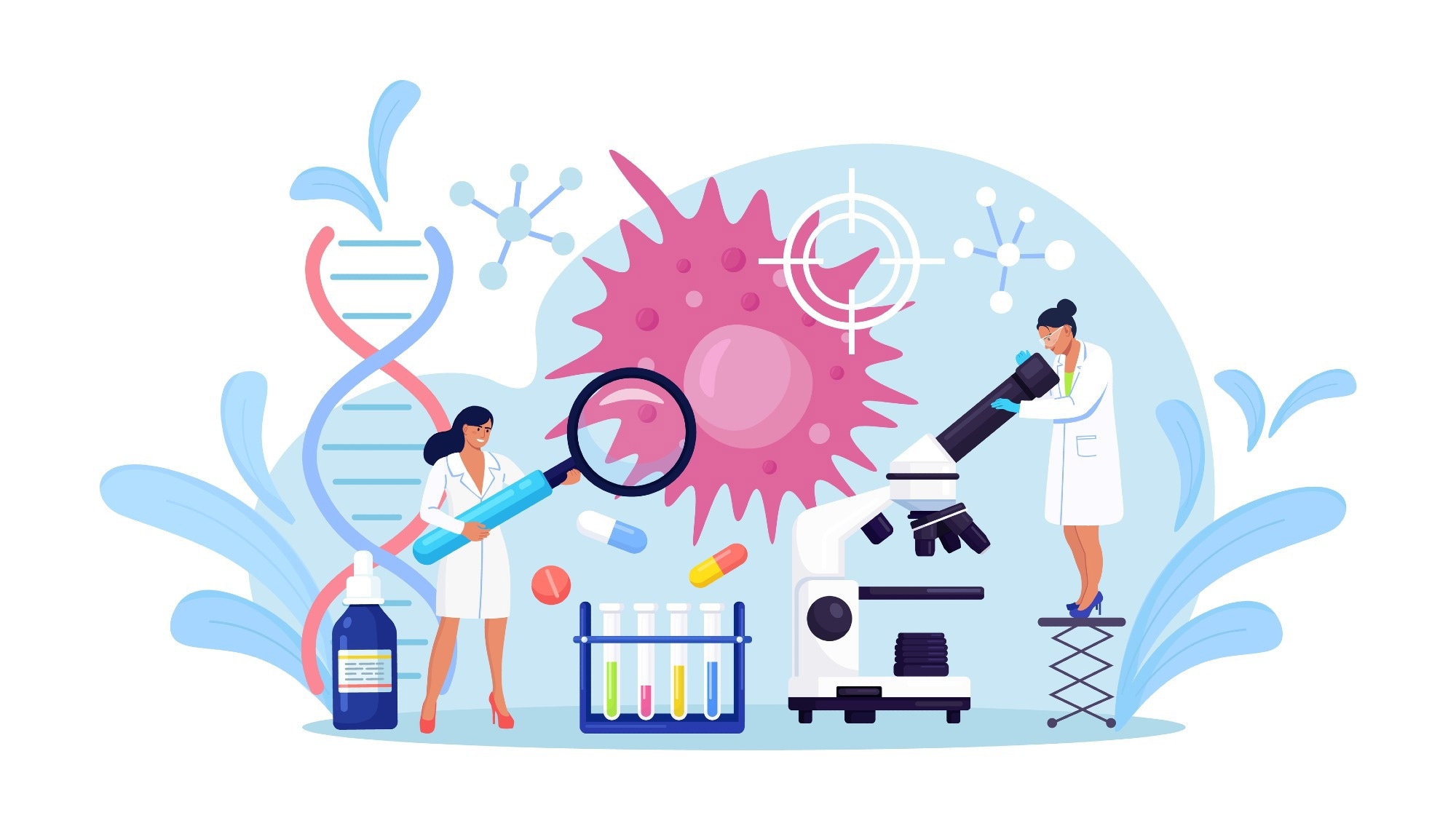Although chemodynamic therapy is a potential anti-tumor strategy, its inefficiency in generating reactive oxygen species (ROS) restricts its clinical translation. In an article recently published in the journal Biomaterials, researchers constructed a liposomal nanosystem to co-encapsulate artemisinin (ART) and copper peroxide nanodots (CPNs) for ferroptosis-involved, autophagy-enhanced cancer cell apoptosis.

Study: Engineering dual catalytic nanomedicine for autophagy-augmented and ferroptosis-involved cancer nanotherapy. Image Credit: Buravleva stock/Shutterstock.com
In this strategy, CPNs release hydrogen peroxide (H2O2) and copper (Cu2+) ions in the tumor cell's acidic environment, followed by endogenous generation of hydroxyl free radicals (.OH) via a Cu- mediated Fenton-like reaction. Cu2+ ions catalyze the production of ROS species from ART components, which cause oxidative damage in cancer cells, leading to cell death. Furthermore, the autophagy-inducing capacity of ART leads to ferritin degradation and increases the intracellular iron (Fe) pool, promoting cancer cell ferroptosis.
Liposomal nanosystems accumulated at tumor sites simultaneously release ART and CPNs upon subjecting the tumor site to ultrasound (US) irradiation. Performing in vitro and in vivo studies on this strategy proved the therapeutic efficacy of autophagy-augmented ferroptosis-involved cancer cell apoptosis. In the present work, Cu served a dual purpose of triggering ART to release ROS and providing a tumor microenvironment (TME)-responsive nanoplatform for suppressing tumor growth.
Nanomedicine for Cancer Cell Apoptosis
Nanocatalytic medicine is a potential antineoplastic strategy that explores the effect of a chemical species on physiological activities. Studies on catalytic reactions inside tumor cells revealed that these reactions were activated by non-/limited/highly toxic substances led to the development of nanocatalytic medicine.
ROS-mediated therapy leverages the intrinsic ROS ability to generate singlet oxygen (1O2), superoxide anions (O2.-), and hydroxyl radicals (. OH), which efficiently leads to cancer cell apoptosis via oxidatively damaging and shrinking the cancer cells. Thus, ROS-based formulations are very effective for cancer cell apoptosis.
Abnormal metabolism in cancer cells enhances the ROS levels in tumors, ultimately causing cell death. On the other hand, non-invasive strategies like sonodynamic therapy (SDT), photodynamic therapy (PDT), X-ray activation, and ultrasound can also increase ROS levels in tumor cells. However, these strategies could also harm the surrounding healthy tissue leading to the undesirable risk of tumor metastasis.
Fenton-type reactions are better alternatives to above mentioned physical strategies that boost ROS production in tumor cells. However, two challenges in this strategy, the overexpression of H2O2 and the lack of mild acidic TME, led to the development of advanced iron (Fe)-based nanocatalysts. Since direct delivery of Fe can cause undesired side effects, replacing Fe with Cu-based nanosystems was beneficial in initiating the Fenton-like reactions.
Engineering Dual Catalytic Nanomedicine for Cancer Nanotherapy
In the present study, the Lipo-ART@CPN nanosystem was fabricated by co-encapsulating CPNs and ART for autophagy-enhanced and ferroptosis-involved cancer nanotherapy. The CNP component was synthesized via a peroxidation reaction. These CNPs served as Fenton agents with H2O2 self-supplying ability to combat the H2O2 limited availability in TME.
Transmission electron microscopy (TEM) images showed an average size of CPNs of about 5-8 nanometers and Lipo-ART@CPNs of 100 nanometers. The Fourier transform infrared (FTIR) spectra of Lipo-ART@CPNs showed the characteristic peaks of ART and CPNs.
The dynamic light scattering (DLS), Zeta potential, and TEM analysis were performed to understand the stability of the Lipo-ART@CPNs nanosystem in various biological mediums and the results revealed its intactness in physiological mediums without any alterations in morphology or size.
Under mild acidic TME, CNPs parallelly released Cu2+ and H2O2, which instantaneously triggered a Cu-based Fenton-like reaction, termed catalytic reaction (I). Additionally, Cu2+ could break ART’s endoperoxide bridge to facilitate the generation of ROS radicals, termed catalytic reaction II. Thus, the Lipo-ART@CPNs nanosystem was utilized to co-deliver ART and CPNs.
The ROS radicals released inside a tumor cell caused intracellular oxidative damage due to lipid peroxide (LPO) accumulation, thus promoting ferroptosis-involved cancer cell death. Additionally, ART-induced autophagy caused the degradation of cytoplasmic components and Fe-containing ferritin that enhanced the intracellular Fe levels and facilitated cancer cell apoptosis.
After the accumulation of nanoliposomes inside tumor cells through enhanced permeability and retention (EPR) effect, the applied US irradiation parallelly released ART and CPNs. With the help of this work, the efficiency of Cu-based nanoagent to catalyze ART-induced ROS generation was demonstrated.
Conclusion
To summarize, the novel Lipo-ART@CPN nanosystem was engineered to co-deliver CPNs and ART for induced and autophagy-enhanced ferroptosis-involved cancer cell death. The CPN parallelly released H2O2 and Cu2+ under mild acidic TME and produced.OH radicals via catalytic reaction I. The capacity of Cu2+ ions to catalyze the decomposition of the endoperoxide bridge of ART boosted the ROS radical generation via catalytic reaction II.
ART-induced degradation of ferritin led to increased cellular Fe levels and promoted ferroptosis. US irradiation at the tumor site induced the drug release from the nanosystem and achieved high therapeutic efficiency by accelerating the catalytic reactions. Thus, the Cu-based dual-catalytic nanoplatform of the present study served as an efficient strategy in cancer management.
Reference
Li, Z., Wang, C., Dai, C., Hu, R., Ding, L., Feng, W., Huang, H et al. (2022). Engineering dual catalytic nanomedicine for autophagy-augmented and ferroptosis-involved cancer nanotherapy, Biomaterials. https://doi.org/10.1016/j.biomaterials.2022.121668
Disclaimer: The views expressed here are those of the author expressed in their private capacity and do not necessarily represent the views of AZoM.com Limited T/A AZoNetwork the owner and operator of this website. This disclaimer forms part of the Terms and conditions of use of this website.